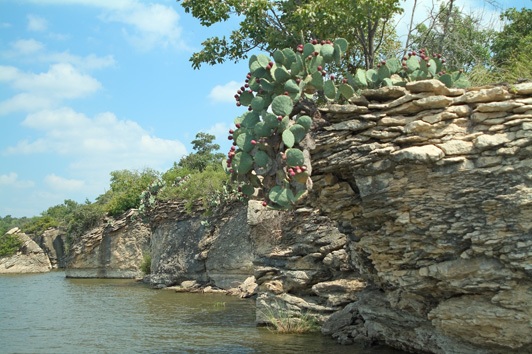
In June and July, it was hot and bone dry with North Texas suffering from a severe drought. Reservoir levels were dropping as the demand for water hit 530 million gallons per day.
But cooler temperatures and what seemed like never ending rainfall – including a record-breaking 14.52 inches in October – wiped out the drought. Lakes filled up at the same time as customer demands for water dropped by nearly 60 percent.
“With Mother Nature we’ve seen a complete turnaround. We went from drought to flood,” says Rachel Ickert, the district’s Water Resources Engineering director. But it’s not altogether a bad thing. “Better to have too much than not enough ….”
With weather forecasts predicting a wetter than normal fall and winter, our water supply will be in great shape for months to come, allowing the District to save money on distributing water and giving us flexibility for pipeline maintenance.
“I think we’re going to be doing really well for quite a while,” says Courtney Jalbert, TRWD’s meteorologist and infrastructure integrity manager. “I think we’ll be in good shape as we move into next year.”
As of Nov. 27, TRWD’s system capacity is at 100 percent. In fact, six of the seven reservoirs in the our system are within a half-foot of their conservation levels and Lake Benbrook is still more than one foot over conservation level.
All of this is happening as we enter into the time of year where we see lower water demands. In November, December and January our four big customers – Arlington, Fort Worth, Mansfield and the Trinity River Authority – only use 250 million gallons a day.
By comparison, demand during the summer months is much higher. For example, in July, the District will typically distribute about 420 million gallons a day. But this year, when the drought was in full swing, we were providing about 530 million gallons a day to our major customers.
Then came the rains.
A rainy September reduced the widespread drought in North Texas, and as the rain continued to fall in record-breaking amounts in October, the drought was wiped out. By Oct. 26, the National Weather Service reported 14.52 inches of rain, well above the 14.18 inches recorded in 1981.
“It is definitely a big swing. We do drought for a few months and get rid of it in a few weeks,” says Lee Carlaw, a meteorologist for the National Weather Service.
The full lakes and reservoirs allow the District to save up to 80 percent on our energy costs for pumping water from East Texas and at the same time get ahead on our pipeline maintenance.
Getting water from Lake Benbrook, which is still above conservation level, costs about $10 per million gallons, while the pricetag for pumping water from Richland Chambers and Cedar Creek reservoirs is $50 or more per million gallons of water, Ickert says.
Going local for water also allows us shut down the Cedar Creek pipeline for a few months, allowing maintenance scheduled for the first of the year to be done now, she says.
“It allows us more time for unknowns and not to be in such a hurry to get things back on line,” Ickert says. “With the rainfall we are expecting, we expect our water supply reservoirs to stay close to full through this winter and into the spring.”


